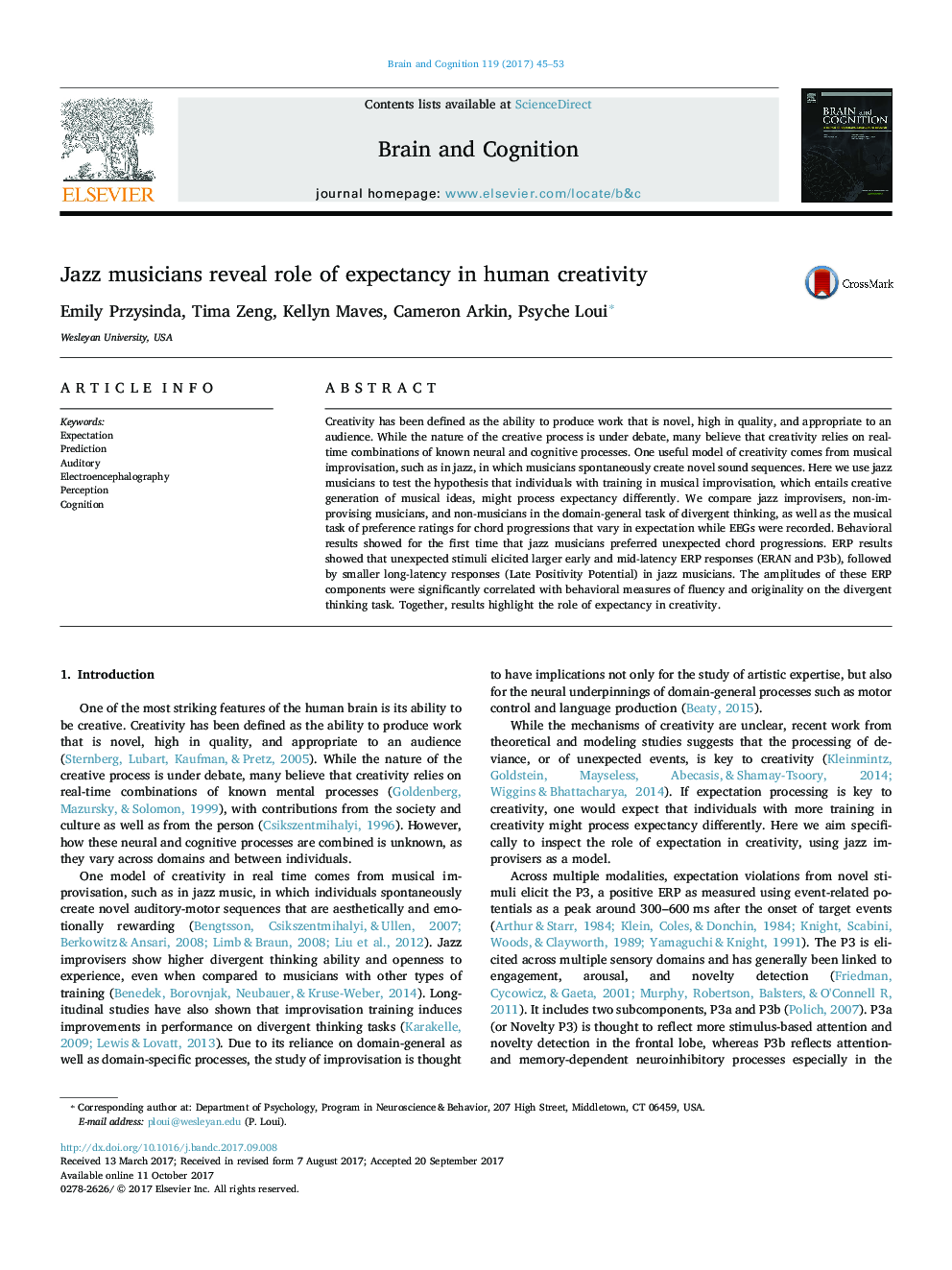| کد مقاله | کد نشریه | سال انتشار | مقاله انگلیسی | نسخه تمام متن |
|---|---|---|---|---|
| 5041053 | 1473952 | 2017 | 9 صفحه PDF | دانلود رایگان |
- Jazz musicians prefer unexpected chord progressions.
- Classical and Jazz musicians show different brain responses to unexpected events.
- Event Related Potentials to unexpected events correlate with creative behavior.
Creativity has been defined as the ability to produce work that is novel, high in quality, and appropriate to an audience. While the nature of the creative process is under debate, many believe that creativity relies on real-time combinations of known neural and cognitive processes. One useful model of creativity comes from musical improvisation, such as in jazz, in which musicians spontaneously create novel sound sequences. Here we use jazz musicians to test the hypothesis that individuals with training in musical improvisation, which entails creative generation of musical ideas, might process expectancy differently. We compare jazz improvisers, non-improvising musicians, and non-musicians in the domain-general task of divergent thinking, as well as the musical task of preference ratings for chord progressions that vary in expectation while EEGs were recorded. Behavioral results showed for the first time that jazz musicians preferred unexpected chord progressions. ERP results showed that unexpected stimuli elicited larger early and mid-latency ERP responses (ERAN and P3b), followed by smaller long-latency responses (Late Positivity Potential) in jazz musicians. The amplitudes of these ERP components were significantly correlated with behavioral measures of fluency and originality on the divergent thinking task. Together, results highlight the role of expectancy in creativity.
Journal: Brain and Cognition - Volume 119, December 2017, Pages 45-53
